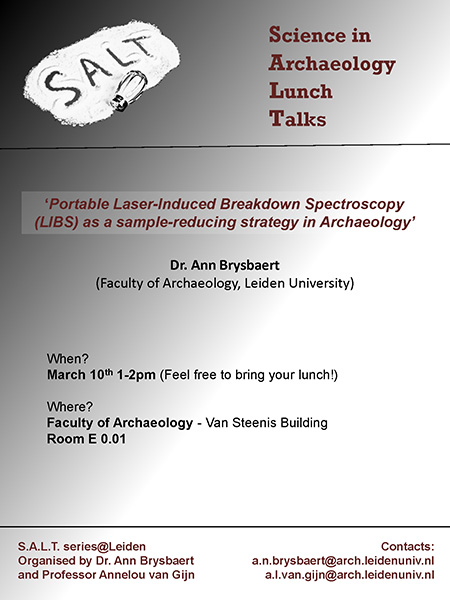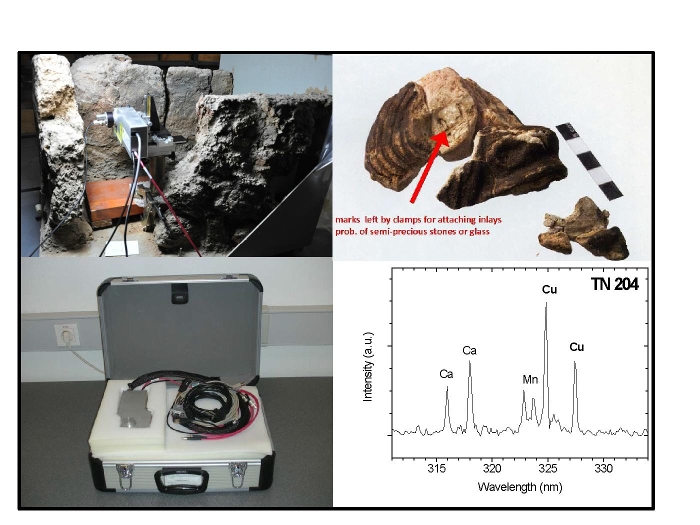Portable Laser-Induced Breakdown Spectroscopy (LIBS) as a sample-reducing strategy in archaeology

Science in Archaeology Lunch Talks (SALT)
10 March 2016
Speaker: Dr. Ann Brysbaert (Faculty of Archaeology, Leiden University)
Abstract: The Laser-Induced Breakdown Spectroscopy technique (LIBS) relies on atomic emission spectroscopy from a laser generated micro-plasma and provides qualitative (and semi-quantitative) information on the elemental composition of materials. It can be applied directly on the object, eliminating the need for extensive sampling of fragile degraded archaeological materials. Especially the instrumentation’s portability and the fast processing of many different materials is very powerful for in situ analyses when archaeological materials cannot travel to laboratories for further investigation.
Combined with detailed macrophotography and microscopic studies, LIBS was employed in the investigation of a wide range of pyrotechnological materials from several Late Bronze Age workshop and activity area contexts at Tiryns, Greece. The analyses were performed by a team of physicists (IESL- FORTH, Crete) and archaeologists (Tracing Networks, University of Leicester) together in the local storerooms and museums of Tiryns and Nafplio. The analyses demonstrate that the micro-destructive LIBS technique provides useful preliminary elemental characterisation of most of the pyrotechnological materials while for some, additional work needs to be conducted to obtain conclusive results. Furthermore, the portability and compactness of the instrumentation allow it to be employed in any workspace with a solid desk, light and electricity access. These important methodological and scientific findings are considered prerequisite steps leading towards and aiding in responsible and more destructive sampling strategies.
